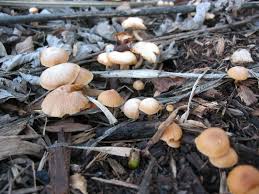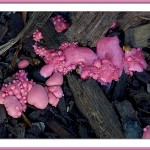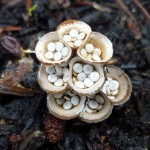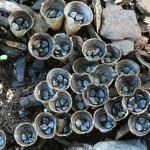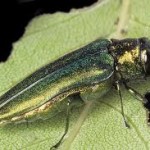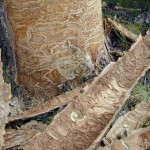Spring is finally here – birds are back, the days are warmer & longer and new growth is .. almost here!
This is the time of year when us landscape professionals experience mulch madness – over the next two months we’ll experience the joy of installing more mulch than seems possible – but boy does it look awesome once we are finished!
If mulch is part of your spring agenda consider these few recommendations and warnings – you can improve plant life, help beautify your property and save some money by doing your home work first.
Plant life benefits
Mulching around the base of trees, perennials, shrubs and even annuals is beneficial for multiple reasons – it protects the root systems from hot and cold temperatures, holds moisture which keeps plants hydrated and if applied thick enough keeps the weed pulling this summer to a minimum.
Be careful not to smother new growth – your perennials are getting ready to bloom and the last thing you want to do is block out there sunlight by covering them with 3 inches of fresh mulch. Either lightly (very light, see through) cover them or make another circle around your perennials so they have room to sprout!
Don’t forget to mulch your trees!
We always recommend mulching around trees – but be careful at the same time. Don’t allow the mulch to touch the trunk of your tree – this can cause insect problems along with rot/mold and diseases to form at the base of your tree – which is the exact opposite of the overall goal! We normally pull the mulch back at about a 3 inch circle formed around the base of the tree. The easiest and honestly best looking way is to form this circle by hand.
Protect your foundation!
Always be sure to build up your landscape beds so they slope away from your foundation. Be sure to do this with the soil before applying the mulch. If the soil slopes toward your home, you can bet your going to have moisture problems down the road!
Spend the extra few dollars and purchase a premium dyed mulch.
Unless we receive a special request for non-dyed bark mulch we always use premium dyed colors – chocolate is our favorite. Red is nice if you like the look. We try to stay away from black. No matter the manufacturer black always fades out rather quickly. If you select the right mulch, instead of looking at a light brown/faded out landscape bed a month down the road you will actually be surprised at the fact you may not need to remulch in the following spring – it makes that much of a difference!
Depending on the size of your landscape the cost to apply new mulch every year can add up quickly – even spending the extra money up front is way cheaper than a full mulch every year!
Don’t waste money on weed barrier.
As a professional landscaper I can tell you that weed barrier products simply do not work. Actually, weeds will take root directly in this fabric.. they will also grow in the mulch as it breaks down. The only true way to have a weed free bed is to use geo textile fabric underneath a decorative gravel – but since we are talking about mulch we are not going to get into gravels with this post.
If you really have your mind set on a fabric underneath your mulch look for a product similar to geotextile fabric. It is used during hardscape installations. Be sure to cut holes for water drainage at certain areas (maybe even at random) depending on the pitch of your bed – this stuff is so thick water will run off of it vs run through!
Hopefully these few tips and warning will help during your spring landscape refresh process. If you need a hand we are always available!

